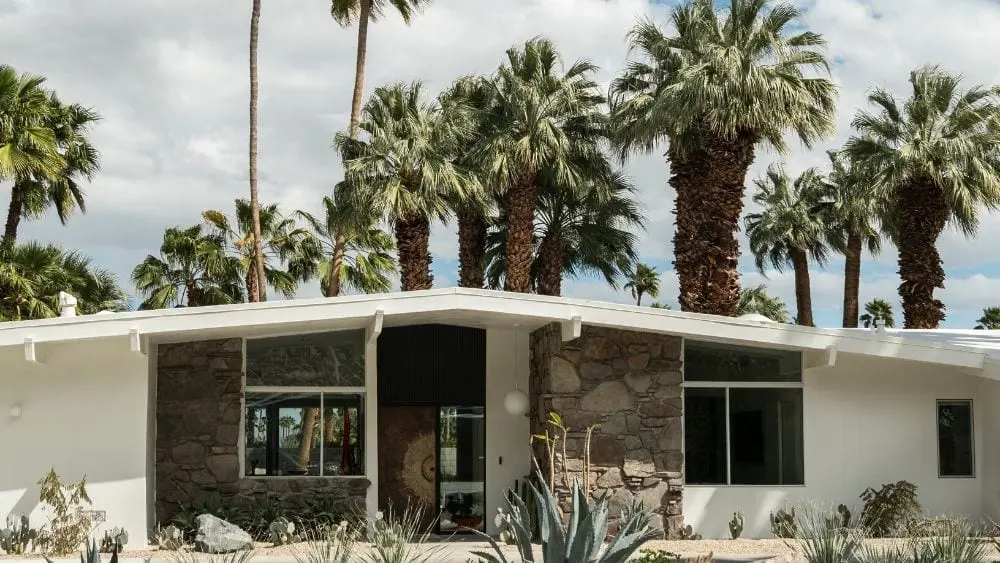
You could say midcentury modern is making a comeback — or you could say it never left. The style that gave us clean lines, gentle organic curves and lasting icons like the Eames chair is still going strong.
A Bit of History
As the name hints, the style is a throwback to design modes of the mid-20th century, roughly between 1945 and 1969. While the “midcentury modern” tag came later (coined for the title of a 1983 design book about 1950s furniture), the main elements of the approach are closely tied to a post-World War II mindset.
Cities expanded and suburbanization swelled after the war in the United States. To meet the growing demand for furnishings and quickly built modern homes, designers threw out fancy details in favor of simple, functional pieces.
But midcentury modern also stems from the larger modernist movement, which has its roots in the Industrial Revolution as well as the post-World War I period. Austin, Texas-based designer and artist Pablo Solomon refers to the movement as an “attempt to humanize industrial modernism,” noting the presence of some Zen-inspired design touches.
How to Create Midcentury Modern Style
The term itself is difficult to define, especially as its use has changed over time. But there are some overarching themes. The midcentury modern approach is practical, durable, comfortable, classic and timeless. It rejects ornamentation unless it serves a purpose. In other words, function trumps form.
Retro nostalgia collides with aspects of minimalism, resulting in sleek and uncluttered lines, pared down forms and the presence of organic and geometric shapes. Perhaps one of the most interesting parts of midcentury modern is the embrace of mixed materials, often used in juxtaposition.
Let’s take a closer look at how different aspects of the style take shape.
Colors
Color can be used to add interest to an otherwise simple space. Like many design styles, midcentury modern allows for a vast range of colors, both neutral and bold. When it comes to bold colors, you’ll see plenty of deep yellows, turquoise, olive green, tangerine or pops of red. On the neutral side you’ll often see pewter gray, earthy browns and white.
Materials
At the advent of the style, builders were experimenting with a number of new materials. Perennial supplies like wood and tile were joined by metal, glass and — new for the time — plywood, plastic, vinyl, plexiglass and lucite.
Adding natural materials like wood, leather and cotton is great for softening your interior space. Or you can add some greenery to connect with nature.
Lighting
Many interesting lighting pieces sprang up during the beginning of the midcentury modern period. Solomon notes that you can still find some wonderful originals, as well as modern reproductions of hanging, table and stand up lighting. Try Herman Miller for good reproductions of Nelson bubble lamps.
Furniture and Appliances
Installing retro appliances in place of more contemporary stainless steel options can add a little bit of midcentury modern to your home. Jere Bowden, a certified kitchen designer with Auburn Design Associates Inc. in Auburn, Alabama, recommends Elmira Stove Works and SMEG for retro-inspired appliances — think soft edges and unexpected colors.
When it comes to the rest of your home, furniture designs like the egg-shaped chair have become synonymous with the midcentury modern style, perhaps even surpassing it. Herman Miller (under the direction of George Nelson) designed some of the style’s most iconic pieces, as did Charles and Ray Eames, Isamu Noguchi and Eero Saarinen.

Rebecca Rosenberg is a freelance copywriter, digital media strategist and world traveler. After working in marketing for some of Austin’s most beloved brands, Rebecca started her own business and left Texas behind to travel the world. You can find her currently bumming around Europe. Often flying solo, she has visited over 35 countries and lived abroad in four. In addition to being a digital nomad, Rebecca is an avid hiker, design enthusiast and certified plant nerd. She speaks English, Spanish, German and Korean.
 55-Plus Homebuyers Want Edgier Amenities
55-Plus Homebuyers Want Edgier Amenities